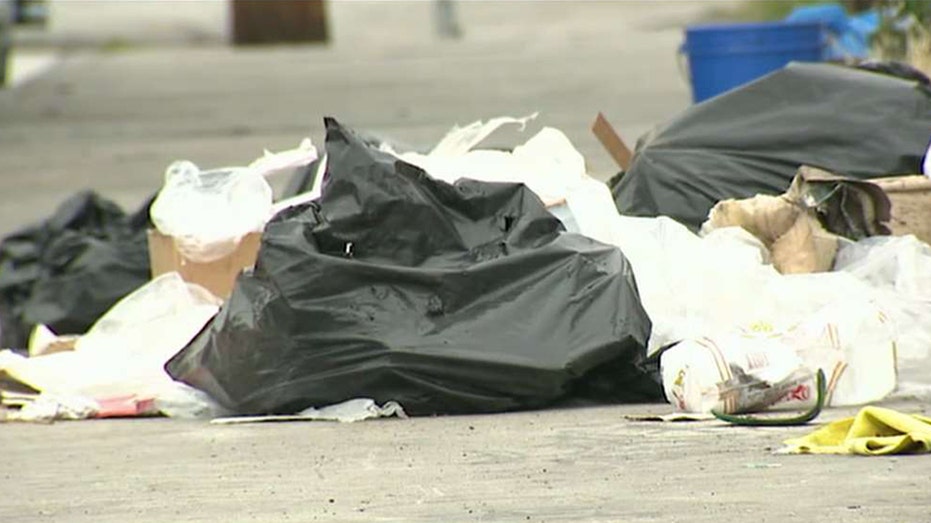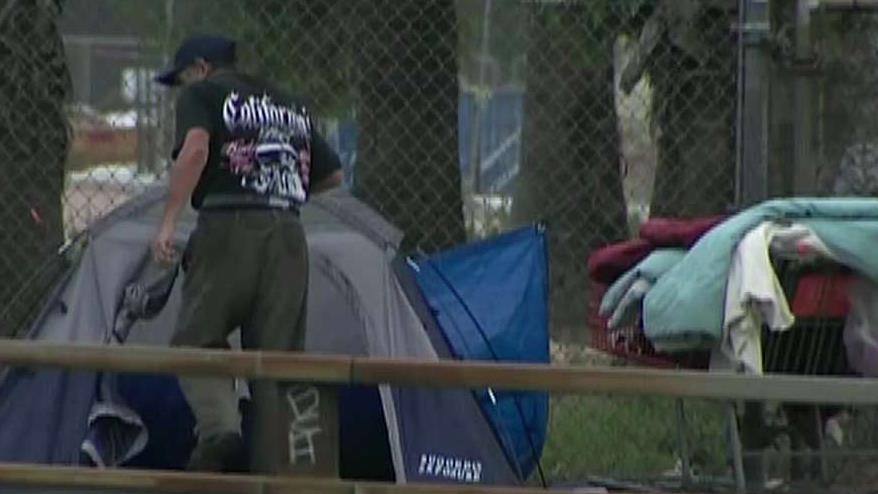Inside Los Angeles' Skid Row, the epicenter of the homeless crisis
In downtown Los Angeles, poverty on Skid Row is astonishing.
As FOX Business' Kennedy walked through the area with talk radio host Bryan Suits, rows of tents -- some made of tarps, some made of garbage bags -- lined the trash-ridden streets, while some people wearing stained, tattered clothing wandered about, others choosing to remain inside the makeshift dwellings. A distinct odor wafted through the breeze as the two surveyed the landscape.

“You look at where we are right now. This is literally the epicenter of what is called Skid Row, marked on Google Maps because historically this has been Skid Row for 100 years. It just wasn’t supposed to stay like this,” Suits said.
When Eric Garcetti became the mayor of Los Angeles in 2013, the situation deteriorated, Suits said. Homelessness in Los Angeles County spiked by 12 percent over the past year and is up for the third time in four years. Despite two voter-approved tax hikes and more than $600 million spent last year by the city and county and other initiatives, the city has the nation’s largest outdoor-homeless population.
“Now it’s come to a crescendo where the mayor of Los Angeles is now declaring this a federal issue. He thinks the rest of the nation looks like this. The rest of the nation doesn’t do this and doesn’t look like this. Because thing No. 1: They stopped enforcing the law against camping on sidewalks and you have to start somewhere. OK. Drug addiction, mental illness, prior convictions ... but you have to start here and clean these sidewalks,” Suits said.

He is also worried about a number of public health issues, including public restrooms being used as “one-stop prostitution, heroin, meth, stolen junk, centers.”
Another problem, Suits said, are hypodermic needles “around the streets,” despite needle drop-off sites the city has set up.
CLICK HERE FOR THE FOX BUSINESS APP
Kennedy and Suits also spoke with a man named Kevin who was living on the streets for six years, but turned his life around and became a chef.
“I went to California State Prison for about a year and a half … always had a home to go to but I chose not to listen to my family so I ran downtown thinking that it was going to be something different. And when I got downtown it became a nightmare for me,” he explained. “Today, I feed a lot of the homeless —1,200 meals a month downtown. A lot of people ask, 'What do the homeless need?' All they need is love. Somebody to love them without reason … There’s a whole bunch of things that took place in their life.”




















